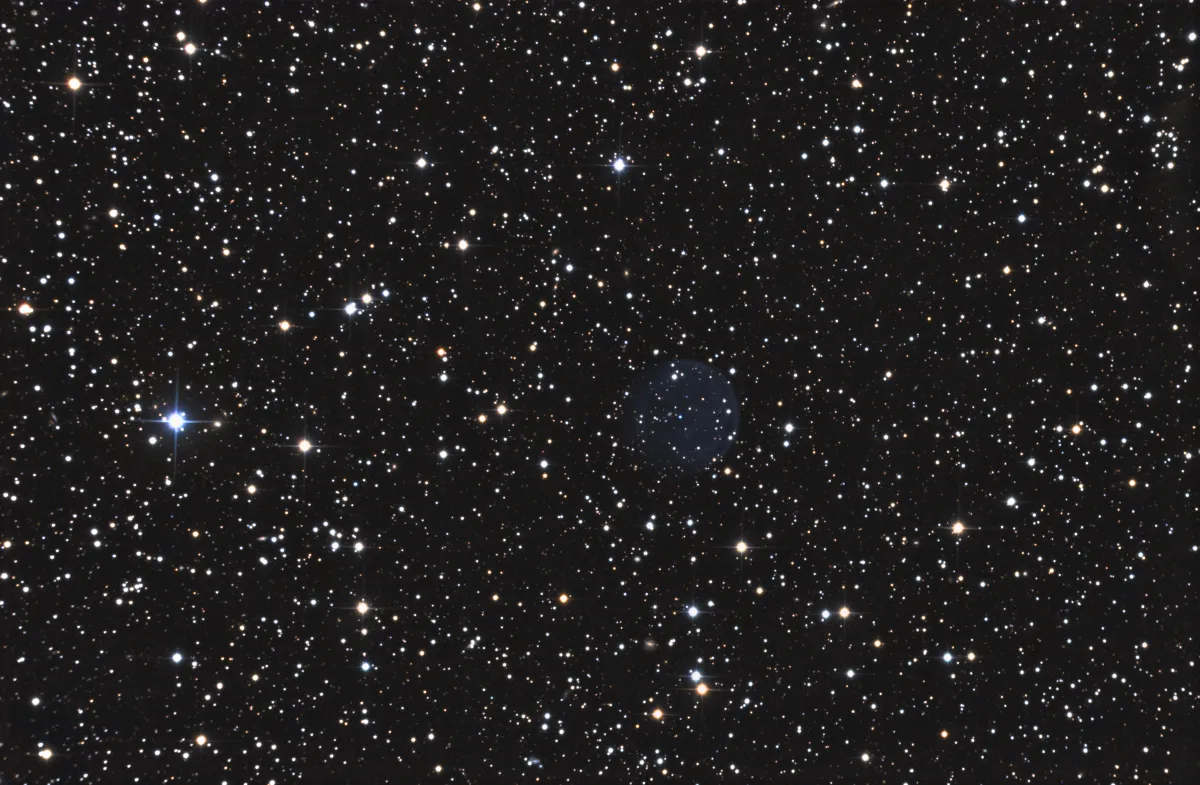Planetary Nebula Abell 61

History
This planetary nebula was discovered in 1955 by the American astronomer George Ogden Abell on the photo plates of the «Palomar Observatory Sky Survey» (POSS). In 1955 he published a first list of 13 globular clusters and the positions of 73 planetary nebulae. The PN first had the number 49 (A55 49). In 1966 Abell published a complete list including the size and description of the 86 planetary nebulae discovered on the POSS photo plates. This planetary nebula was then number 61 on his list. The designation PK 77+14.1 comes from the two Czechoslovak astronomers Luboš Perek and Luboš Kohoutek, who in 1967 compiled a catalog of all the planetary nebulae of the Milky Way known at that time. [331, 332]
Physical Properties
Abell 61 is an old and very faint planetary nebula. Magnitudes through different filters are: B 17.05, V 17.39. The distance to Earth is 1559 pc. [145]
| Designations | PN G077.6+14.7: A 61, PK 77+14.1, A55 49, VV' 495 |
| Right Ascension (J2000.0) | 19h 19m 10s a |
| Declination (J2000.0) | +46° 14' 36" a |
| Dimensions | 200." (optical) |
| Radial Velocity | -48.0 km/s |
| Expansion Velocity | 32. (O-III) > 30. (N-II) km/s |
| C-Star Designations | AG82 365, CSI +46 -19177, UBV 16374 |
| C-Star Magnitude | U: 15.82, B: 17.05, V: 17.39 |
| Discoverer | ABELL 1955 |
Finder Chart
This planetary nebula can be found in the constellation Cygnus and is highest in the sky from the months March to December. On 11 July it is in opposition to the Sun and crosses the meridian at local midnight.
